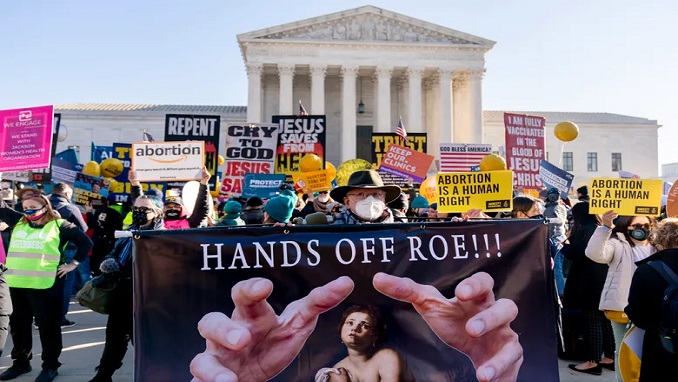
The Supreme Court’s reversal on abortion rights, eliminating the constitutional right to an abortion, has left states in shambles as laws go back and forth over the legality of the procedure.
In Utah, the law changed three times in five days. The day the Supreme Court overturned its 50-year precedent set by Roe v. Wade in June, a trigger law banned abortions immediately in Utah.
On Monday, a judge blocked the ban, and abortions resumed. On Tuesday, state legislators revived an old law limiting abortions to 18 weeks of pregnancy.
The legal back-and-forth is not only in Utah. More than a dozen states jumped to ban the procedure, enacting trigger laws designed to take effect if and when Roe was overturned, or reinstated old laws that were previously unenforceable.
But laws against bans came just as quickly. Plaintiffs have argued the bans run afoul of state constitutions, are too vague or are wildly out of date. Judges in several states have agreed. Bans have been temporarily blocked, reinstated, and sometimes blocked again, as cases wind their way through state court systems.
For abortion providers, and for patients seeking abortions, this has meant navigating an impossible situation in which abortion could be allowed one day — even one hour — and banned the next.
Providers have been forced to cancel procedures in the middle of the day, or tell waiting rooms filled with patients they didn’t know if the procedure would happen, or tell patients to wait on standby in case the procedure became temporarily legal again.
In Kentucky, a trigger ban took effect and was then blocked by a circuit court judge less than a week later. Two weeks later, a federal judge allowed a separate ban on abortions after 15 weeks of pregnancy to take place. The trigger ban, which was to stop all abortions, remained blocked. Then last week, a Kentucky court of appeals judge allowed the trigger ban to take effect while the case against it proceeds.
Louisiana has seen even more flux and chaos. The state’s trigger ban has now been blocked and reinstated three times in six weeks.
Trigger bans in North Dakota and Wyoming were blocked before they could take effect. But even though abortion remained legal, providers in those states said patients and medical professionals did not always know what was going on. People were confused whether contraception was legal, or Plan B, nonetheless abortion.
In some states, enforces of the bans have asked for clarity in the laws. In West Virginia, the state attorney general said in a memo that an 1849 law banning abortion was “on the books and enforceable,” but also asked state legislators to reconcile many of the conflicting abortion statutes that had been written in the centuries since. A few weeks later, a judge in West Virginia blocked the ban, and now legislators are scrambling to pass a new ban.
Arizona has seen no consensus on whether abortion is even legal. The state attorney general said it was banned, and pointed to a 1901 law criminalizing abortion. But abortion and women’s rights activists say the old law can’t take effect until a 1973 injunction is lifted.

Be the first to comment